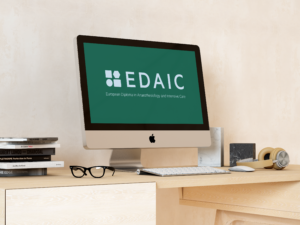Newsletter 2022
Newsletter July 2022: We, our specialty and the future of medicine
Gabriel M. Gurman, MD
Chief Editor
The COVID-19 pandemic has brought sorrow, pain and desperation to many families, all over the world, and our continent has not been spared.
Up to now, almost 2 million died from the disease just in Europe, and more than 6 million all over the world.
This catastrophe brought (better late than never!) our profession under the spotlight, offering to the outside world some details about the anaesthesiologist’s and anaesthesiology’s capabilities of acting in a situation which was rather new, and which nobody was able to predict.
The need for acute care, especially (but not only) airway management and mechanical ventilation, but also the distribution of critically care beds according to proven criteria, made our speciality and specialists needed in every single hospital and emergency room.
For many among both the public and our colleagues, the ability of the anaesthesiologist to lead the fight for the lives of his/her patients was something completely new.
Of course, we have many times before been known to be able to rapidly diagnose an acute condition and take immediate measures in order to start solving the problem.
We also have been known as having the expertise and the means to isolate patients one from the other, and offer them the right management in an environment in which each of us was supposed to be able to defend him/herself from becoming a victim of the dreadful disease.
But, soon, our peers and others discovered a simple fact, known by almost each of those who used to share the same team with anaesthesiologists: we are very good organisers. We know not only to organise our own work but also to show those working with us (nurses, technicians, etc) the way to obtain the maximum results with a minimum of resources.
Suddenly, for most of those who shared with us the working day and night we proved to be leaders, distribute tasks, check the results, encourage and support, but also (above all) put ourselves in the first frontline against the “enemy”.
Fortunately, the pandemic seems to be in retreat, hospitals can go back to their routine activity, various wards returned to their original tasks, and the critical care units become once again the place where road and work accidents, patients after surgery and those with decompensated vital organs are taken care of.
But at the same time, it seems that the medical community and public opinion got a new chance to look at us more carefully.
And what did they discover?
First of all, the universality of our profession. All over the world, we are able to narrow the gap between more and less affluent countries. In any country and hospital anaesthesiology and its domains deal not only with pain-free surgery (the traditional core of our speciality) but also with successful management of vital organ failure, prevention of postoperative pain and treatment of chronic pain.
In most of the countries of our continent, this task is covered by our speciality, since we succeeded in enlarging our field of activity outside the operating room, and avoided futile sub-specialisation.
In comparison to other medical specialities, the anaesthesiologist knows how to maximise the use of the financial resources he/she is entitled to manage. For instance, we knew how to build up (and restrict!) the list of pre-anaesthesia lab tests relating to the patient’s medical status, saving a lot of money, to be used for other aims.
We proved we know how to overcome the perennial shortage of medical manpower, by including in our team’s non-medical personnel, ready to help, but never to replace our presence near the anaesthetised patient.
And above all, we showed everybody that almost two centuries of teamwork in the operating room taught us how to cooperate with other specialities in every corner of the hospital.
True, we already knew all of the above,
The pandemic lit up and uncovered (to others) these well-kept “secrets” of our speciality.
As the French say (and the English too!): a quelque chose malheur est bon (in free translation: every cloud has a silver lining).
The years to come will show how the medical community all over the world will know how to use these clear patterns of our speciality for the sake of our patients.
[maxbutton id=”1″ url=”https://www.esaic.org/newsletter/” text=”Read the Newsletter” ]











